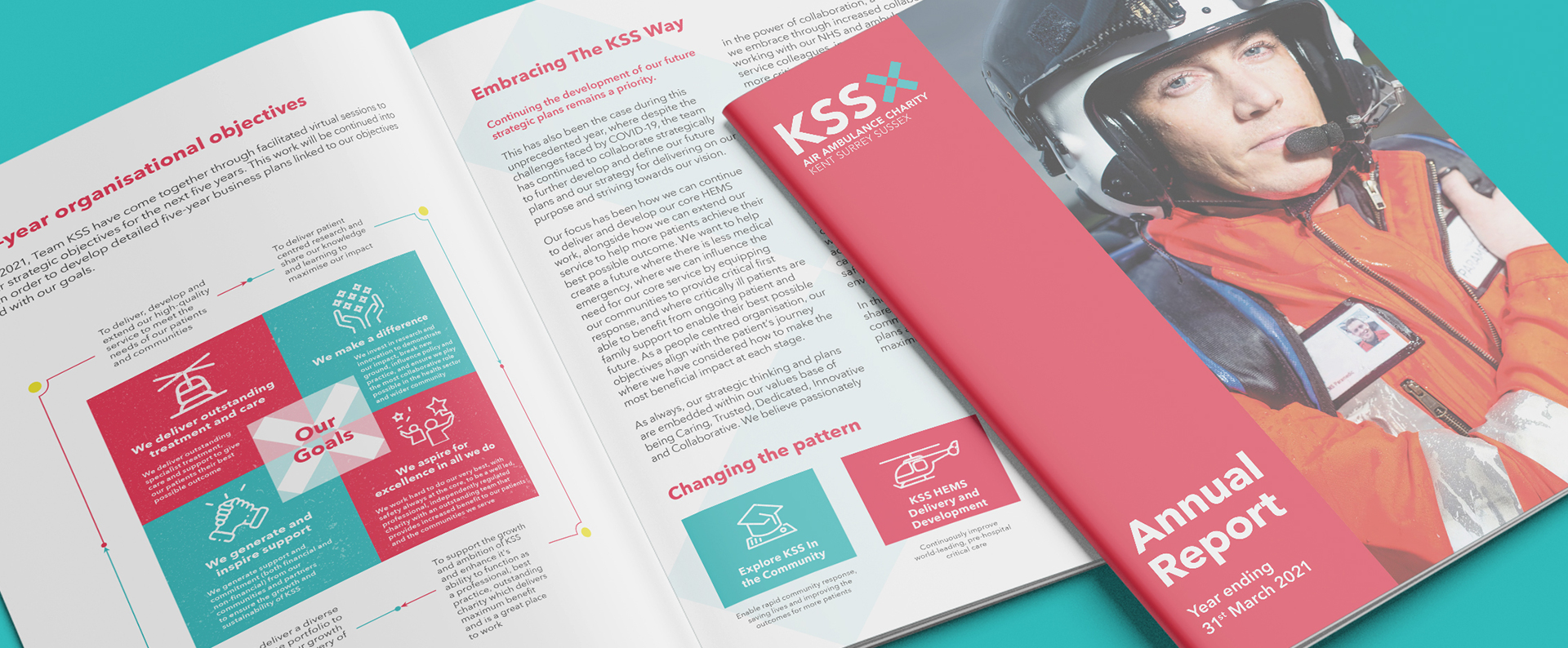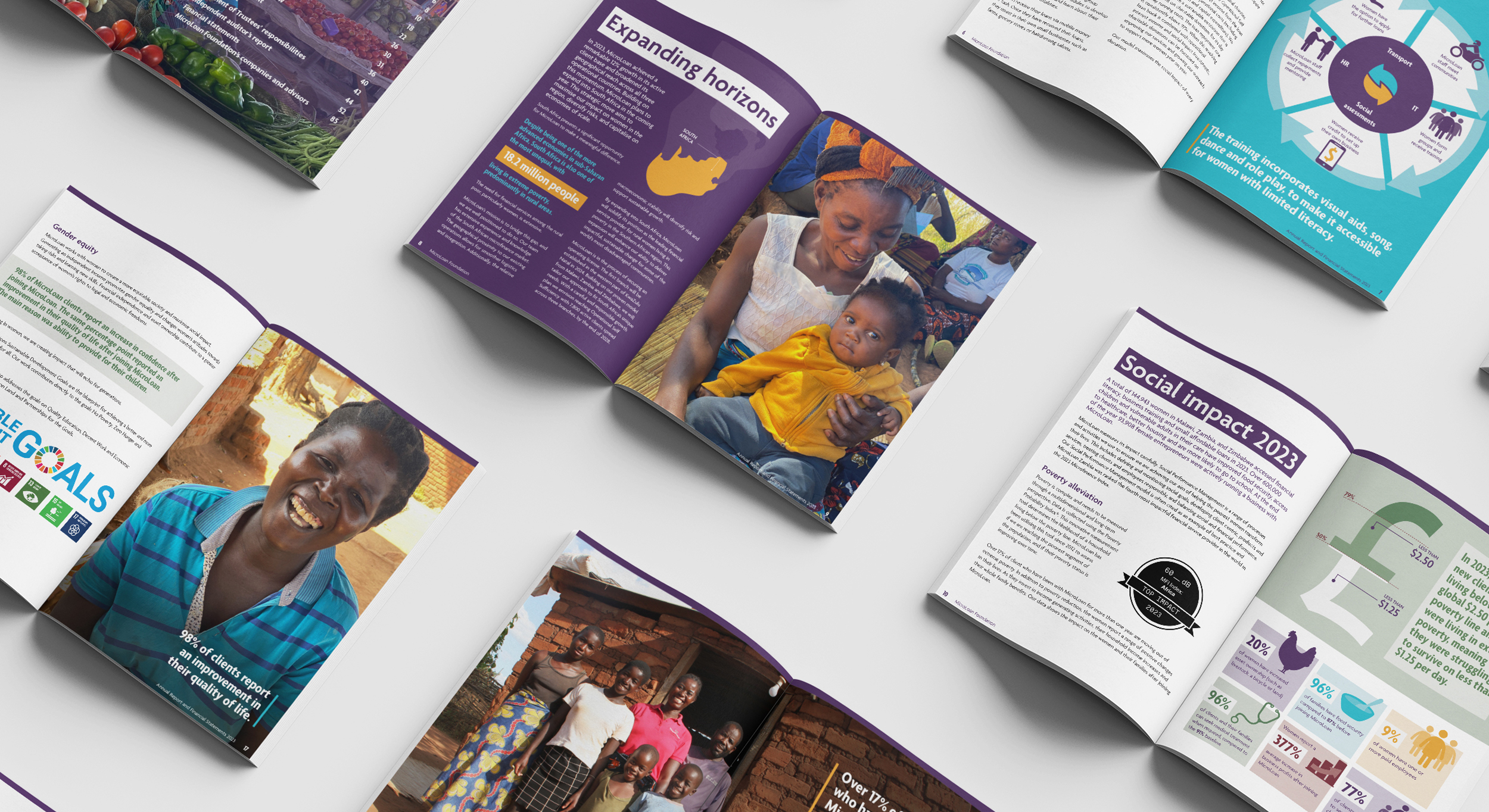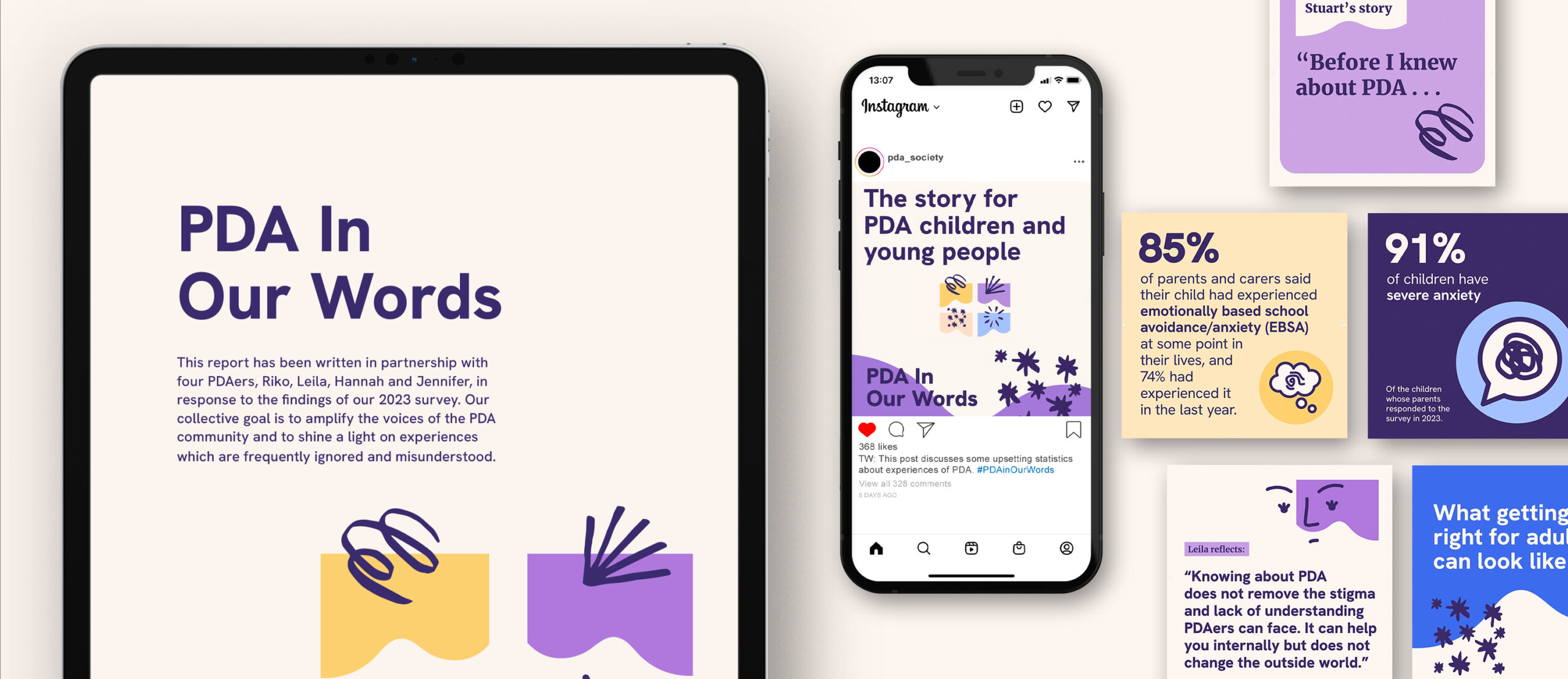
Let’s face it, pulling together your charity’s annual report can feel like a mammoth task. You’re sorting through piles of data, hundreds of photos, success stories, impact stats – all while trying to meet compliance standards and keep your team and trustees happy.
And since annual reports are official documents, it’s easy for them to end up a bit… well, dry. But with the right approach, they can be so much more than a box-ticking exercise. A well-crafted annual report can become a valuable piece of marketing – something that engages your supporters, reassures funders, inspires donors, and even helps attract future investment.
Here are our six top tips for turning your annual report into something your stakeholders will actually want to read – and that your team can be proud of.
1. Start with your audience
Before you write a single word, be clear on who the report is really for. Is it aimed at existing donors? Grant funders? Corporate sponsors? Beneficiaries? Your answer will shape everything – from the tone and content, to the design, visuals and even the format.
When you’re speaking to donors, focus on the impact they’ve made possible. If you want to catch the eye of potential partners or sponsors, showcase your reach and highlight stories that offer shared value or media potential. Speaking directly to beneficiaries? Reflect their voices back through stories, quotes and photos that feel familiar and affirming.
A clear sense of audience helps you remain focused – and stops the report from becoming a catch-all document that ends up pleasing no one.
In a recent report we designed for the PDA Society, we carefully considered the needs of the intended audience, from the colour palette, to the layout and typography. The report featured real life experiences from people with PDA and our challenge was how to break up the text and give each testimonial personality without using photography or more literal illustrations. The result is refreshingly different, using colour, shape and simple line illustrations to define various aspect of the report.
2. Make it about them, not you
It’s easy to fall into the habit of listing everything you did as an organisation. But your supporters, funders and stakeholders want to see the part they played in that success.
Take a donor-centred approach. Rather than “we did this”, try “thanks to your support, this happened”. Use language that invites readers into the story, shows them the difference they’ve made, and makes them feel proud to be part of it.
And be ruthless when editing – keep asking: “So what?” Does this help your audience understand your mission, feel something, or know what to do next? If not, consider trimming it.

3. Balance facts with feeling
Yes, your annual report needs to show the numbers – but numbers alone won’t move people to action.
The most memorable reports pair data with stories. Impact stats are important, but they become much more powerful when combined with real experiences from the people you support. Stories create emotional connection, help your work stick in people’s minds, and make abstract impact feel tangible.
Use quotes, case studies, and first-person perspectives wherever you can. And don’t bury your best stories in the middle of the report – lead with them. Hook your readers early and let the stories carry your message.
4. Don't just look back, look ahead
An annual report is a brilliant chance to celebrate your achievements and say thank you – but it’s also an opportunity to build momentum for what’s next.
Let readers know where you’re heading. What’s your focus for the coming year? What support do you need to get there? Are you launching a new service, growing a programme or planning a major campaign?
MicroLoan Foundation recently used their annual report to celebrate the impact of their poverty alleviation work across Malawi, Zambia and Zimbabwe, and gather traction for their upcoming plans to expand into South Africa.
Being open about your plans helps people feel connected and invested in your journey. And it’s a great way to start future conversations with funders, partners and donors.

5. Make it visually engaging
Design matters – even if your report is packed with brilliant content, a dull layout or wall of text will turn readers off.
Break things up with clear headings, pull quotes, infographics and high-quality images. Make key stats visual and digestible. Use icons or colour to create hierarchy and flow. And apply your charity’s brand consistently so the report feels like a natural extension of your other comms.
The annual report that we designed for KSS Air Ambulance was an important marketing tool to attract potential investors, so it was important that it projected a positive image of the brand. We demonstrated how the charity’s assets could be used more creatively and used photography, infographics and bespoke icons to keep readers actively engaged with content.
And don’t be afraid to try a different format. Could your next annual report work better as a short printed booklet or impact summary rather than a hefty PDF? Or maybe as a dedicated landing page or microsite that includes interactive content, videos, and downloadable stats?
The format should serve the audience – not the other way around.
6. Repurpose your report content
You’ve put time, thought and effort into gathering stories, writing impact summaries and designing visuals – so make it work harder for you.
Pull out the strongest stats and stories and reuse them across your social media, newsletters, presentations and campaigns. A quote from a service user could become an Instagram post. A donor story could feature in your next appeal. An infographic from the report could be reshared in your quarterly update. The more you repackage and reuse the content, the greater the return on all that effort.

A few things to keep in mind:
- Think bite-sized: Use short sections, bullet points, and bold key stats. People often scan, not read.
- Be honest and human: Share challenges as well as wins. Authenticity builds trust.
- Use a clear structure: A contents page, welcome letter, and highlights section make things easier to navigate.
- Proofread carefully: Typos and formatting issues can undermine credibility – get a fresh pair of eyes on it.
The secret to a great annual report
Make it meaningful, engaging – and actually enjoyable to read
Done well, an annual report is so much more than a formal requirement. It’s a powerful way to tell your charity’s story, strengthen relationships and set the stage for future support.
If you need help creating a report that’s beautifully designed, audience-focused and aligned with your brand and values, we’d love to help.